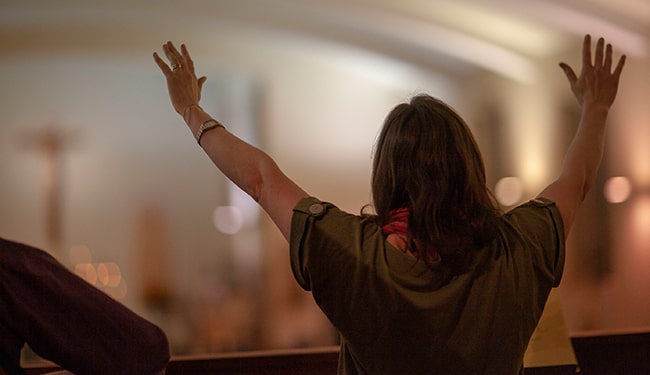As we reopen our doors it’s critical that you make decisions based on the information available for your area. States, regions, and cities are in different stages of the pandemic so be sure you are aware of the regulations and mandates for your location. It is also important to consider your staff, congregants, and facilities in your decision to reopen. So if your congregations or staff tend toward a higher risk group due to their age, or your facilities are limited in space which limits the ability to social distance, it may be too soon.
Be sure to communicate with your congregation regularly and request their feedback and expectations. Consider that not everyone will be comfortable returning just yet and also understand there is no rush to return to your physical church. You can continue streaming services if any part of your congregation is still experiencing anxiety. Just be sure to extend grace to all regardless of the decisions you are making.
The Physical Church
- Clean your church. Germs are transferred in high-traffic, high-touch areas. So sanitizing pews, handbooks (or removing them), light switches, doorknobs, bathrooms, etc. is necessary.
- Be sure you are sanitizing properly. Use the right disinfectants and follow directions for proper use.
- Consider limited use of bathrooms, closing children’s areas or childcare, eliminate the use of all nonessential rooms and request attendees go directly to the sanctuary.
- Remove all information cards and writing devices from the pews.
- Communicate via signs and other indicators so your attendees remember to do non-touch greetings, stay six feet apart, and are aware of the steps you’ve taken to provide a clean safe environment.
The Mechanics of the Service
- Create fun ways to greet and dismiss the congregation. No touching while social distancing. For example, utilize all your exits, create space where people can congregate without crowding (great use of the outdoors), etc.
- Allow family members to sit together but remind others to practice safe social distancing. Even consider separate areas for families to reinforce the social distancing practice for others.
- Look at how you are offering communion, taking collections, and distributing bulletins. Limit contact by not passing plates or handing bulletins out. Consider leaving bulletins on seats and require they be taken home, post bulletin information online, or project it prior to or after your service.
- Avoid sharing the microphone and pulpit without sanitizing it first.
- Encourage everyone to use online giving. If they aren’t able, provide vessels where offerings can be dropped safely and securely.
Service Frequency
- Don’t stop streaming your service just yet. Be sure to highlight in your streaming the precautions you’re taking to ensure the safety of those attending.
- It may be time to offer more services to alleviate the anxiety of being able to social distance properly.
- If additional services are added, be sure to leave enough time to sterilize the facility between each one. This may require recruiting enough volunteers, shortening your services to allow for time to clean, or offering services on additional days.
- Be deliberate in the number of volunteers to ensure you have enough but not too many that it impedes the cleaning process. Also be sure your volunteers aren’t part of a high-risk group (older, underlying conditions, pregnant, etc.)
- Many church software packages and social media services (like Facebook) allow registration and ticketing for events. Now is a great time to implement this for your services.
- If you tend to get a lot of visitors and you’re streaming your service, you might want to set up another room (like a cafeteria, or gym) with additional seating to stream to the overflow that can’t be accommodated in the sanctuary.
The Other Necessities and Social Time
- It’s too soon to start up the coffee and donut social hour and the Wednesday night dinners. But as congregants start coming back and restrictions lesson, you can start reintroducing these. If in doubt ask those attending
- Restrooms are a concern and use should be carefully considered.
- Offering for emergencies only.
- Provide instructions and supplies to disinfect in the best way.
- Only allowing children to visit with parental supervision is highly recommended.
- Be sure to post guidelines for washing hands properly.
- You should display and offer hand sanitizers throughout the church. If you have difficulty locating supplies, check with business owners in your church. These products are available in bulk through supply companies which may be an easier option for procuring them.
- It’s helpful to supply or make masks available to make congregants feel more comfortable. This is a great service project for the people who can sew at your church. Donations ($ or food) for the masks could be collected and used for your food pantry.
Volunteers
- Having greeters and volunteers available to address questions will help ease any anxiety your congregants may have.
- Develop a plan for your greeters so they remember to not physically touch anyone.
- Have the greeters hold the doors open for all your congregants. Providing gloves will demonstrate that you’re taking this seriously.
- You may not want your greeters to wear masks but make it optional.
- Train all your volunteers beforehand to be able to address questions, policies, or procedures your church has implemented.
- For new or existing volunteers that will be in contact with children, youth, or vulnerable adults be sure you have up-to-date background checks on file.
- You may want to develop plans for handling any visitor who refuses to follow your church procedures. It hopefully will not happen but it is best to have them prepared.
- Having a volunteer monitor the bathrooms and ensuring social distancing outside, before and after the service may provide additional comfort to those attending.
- If you have a volunteer that is medically trained, you may want to enlist them to take the temperature of all your volunteers and church leaders prior to your service.
Small Groups and Other Meetings
- Be sure to communicate to your congregants the status of all your activities (services, Sunday school, small groups, daycare, etc.) Just because your church is restarting onsite services doesn’t mean that everything is starting back up.
- Create a schedule for your facilities. If groups want to meet at the church use nights or rooms that don’t currently have another meeting.
- You’ll still need to consider social distancing standards for all your groups which may restrict the use of smaller rooms.
- Remember any room or high traffic area that is used will need to be sanitized (including bathrooms, light switches, water fountains, etc.) before another meeting can take place. Be sure this is incorporated into the planning.
Sunday School and Childcare
- It is recommended that children under the age of two not wear masks. So it may be too soon to start childcare or Sunday School back up.
- A good rule to follow for childcare and Sunday School is to have them resume when the local schools start back up.
- If you do resume your childcare, be sure to screen and train volunteers thoroughly. Screening your childcare volunteers Prepare them for children with separation anxiety, fear of adults in masks, keeping the children separated.
- Evaluate your check-in and check-out procedures. Minimize human contact and contact with devices.
- Do not allow parents into the childcare room.
- All toys, play equipment, etc. will need to be cleaned between each use, so it may be best to remove them completely.
- If there are books, have the adults read to the children.
- Now would be a great time to verify you have recent background checks on your child care volunteers. Annual renewal of background checks ensures your records are current and gives your parents peace of mind knowing you are not only caring for their children’s health but also their safety.
- Childcare should really be one of the last areas of your church to open. There are too many potential issues that can arise and our most precious family members should be treated as such.
Music
- Choir and Praise Teams should consider limiting the number of members or consider suspending this element of your services.
- Equipment, including microphones and instruments, should not be shared.
- Be sure to maintain social distancing between participants and ensure they are far enough away from attendees.
- Eliminate the use of choir robes. If they are used they should be dry cleaned between uses.
- Sanitize all stands, chairs, instruments, etc. after each service.
- If you aren’t using a choir or Praise Team, be sure to print music out for your attendees and request they take it with them when the service is over.
Technology
- If you use any technology, always clean it between uses. This includes microphones, headphones, computers, laptops, etc. after every use.
- Be sure to record when items were cleaned and use alcohol-based cleaners for any technology.
- Choose streaming platforms that are most accessible to your attendees. Facebook is a popular, widely-used choice.
It may all seem overwhelming but think back to mid-March when we were introduced to the restrictions brought on by the pandemic. Those were overwhelming too. We will eventually feel more comfortable with the new normal and we will all be taking these precautions in step with our daily lives.
Read More:




